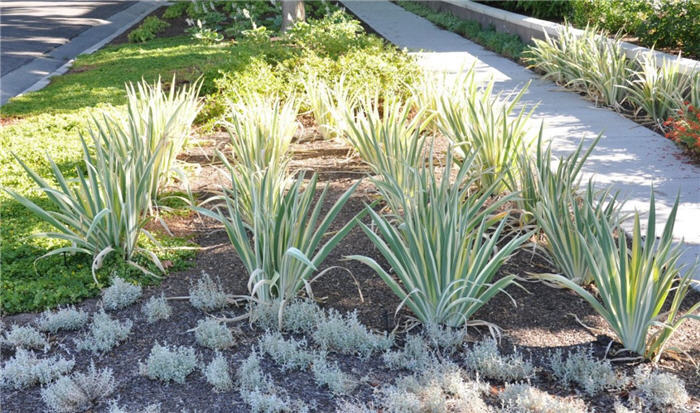| Botanical Name: Iris pallida 'Variegata' | |
| Common Name: Variegated Iris |

-
Anatomy
-
Culture
-
Design
Plant Type
Perennial
Height Range
1-3'
Flower Color
Blue
Flower Season
Spring, Summer
Leaf Color
Green, White, Variegated
Bark Color
n/a
Fruit Color
n/a
Fruit Season
n/a
Sun
Full, Half
Water
Medium
Growth Rate
Moderate, Slow
Soil Type
Sandy, Clay, Loam
Soil Condition
Average, Rich, Poor, Well-drained, Dry
Soil pH
Neutral, Basic
Adverse Factors
n/a
Design Styles
English Cottage, Formal, Japanese, Meadow, Mediterranean, Ranch, Seascape, Spanish, Woodland
Accenting Features
Fragrance, Showy Flowers, Specimen, Unusual Foliage
Seasonal Interest
Spring, Summer, Fall
Location Uses
Entry, Perennial Border, Shrub Border, Foundation, Parking Strip, Patio, Parking Lot, Raised Planter, Walkways
Special Uses
Cut Flowers, Mass Planting, Naturalizing, Small Spaces
Attracts Wildlife
Hummingbirds, Butterflies, Wildlife
Photographer: Greenwood Garden
-
Description
-
Notes